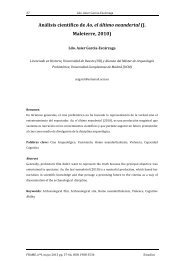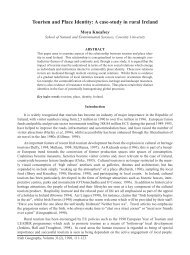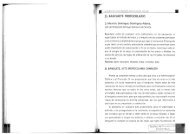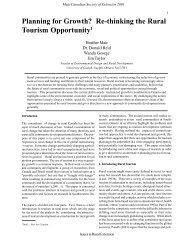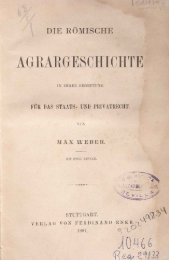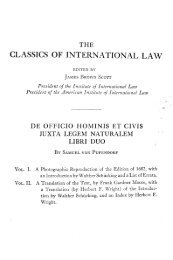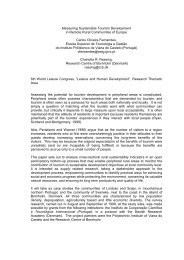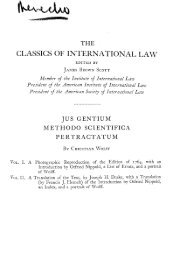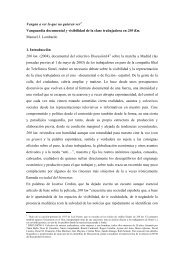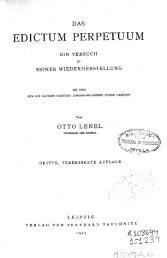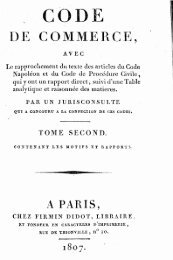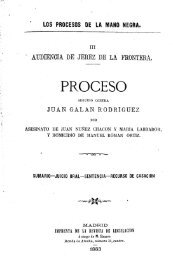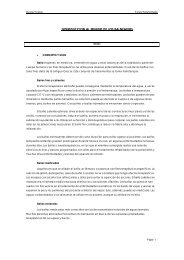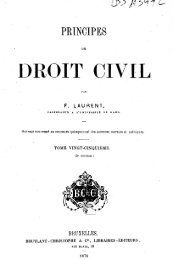Alicante Step by step - Universidad de Sevilla
Alicante Step by step - Universidad de Sevilla
Alicante Step by step - Universidad de Sevilla
Create successful ePaper yourself
Turn your PDF publications into a flip-book with our unique Google optimized e-Paper software.
Along the narrow street called Calle <strong>de</strong> Labradores stands one of the finest 18th-century<br />
palatial homes pertaining to the local nobility: Berenguer <strong>de</strong> Marquina, the ol<strong>de</strong>st, located<br />
next to the Communion chapel of the concathedral; Maisonnave, also known as the Llorca<br />
home, seat of the Municipal Archive preserving remains of a Late Roman necropolis;<br />
Centro 14, currently part of the municipal buildings given over to the Youth Department<br />
and an exhibition room; O’Gorman, situated at number 18 and currently up for restoration;<br />
and the Marqués <strong>de</strong>l Surco palace, number 19, where the <strong>Alicante</strong> chronicler, Rafael<br />
Viravens, spent his last days.<br />
Also in the old quarter of town, on the corner of Calle Miguel Soler and Calle San Nicolás,<br />
is the Díe manor house and winecellar. At the higher end of the street, facing the Calle<br />
Jorge Juan, stands the sober Marqués <strong>de</strong>l Bosch palace, built in the early 19th century,<br />
and containing a valuable library and furniture display.<br />
Worthy of mention from the 20th century is the large neoclassical Provincial Council<br />
building, Palacio <strong>de</strong> la Diputación Provincial, with ornamentation reflecting the influence<br />
of the Levantine Baroque, and constructed <strong>by</strong> the architect Juan Vidal in 1931.<br />
Behind this building is the so-called “Gar<strong>de</strong>n of the Celebrities of <strong>Alicante</strong>”, with tiled<br />
friezes and monuments erected to some of the more notable personalities from the province<br />
of <strong>Alicante</strong>.<br />
OTHER CIVIC MONUMENTS AND<br />
BUILDINGS OF INTEREST<br />
Castillo <strong>de</strong> San Fernando (St Ferdinand Castle) tel. 96 514 32 90<br />
This castle was built on the Tossal hill at the beginning of the 19th<br />
century in response to Napoleon's approach. It was soon ren<strong>de</strong>red<br />
strategically useless, however, and became a local recreation site. It<br />
still preserves parts of its walls and a doorway that make a stopover<br />
worthwhile.<br />
Panteón <strong>de</strong> Quijano (Gar<strong>de</strong>n)<br />
This is one of the last typically romantic gar<strong>de</strong>ns in the entire city.<br />
It was built between 1855 and 1857 and preserves a funerary mound<br />
in its centre, crowned with an obelisk <strong>de</strong>signed <strong>by</strong> the architect<br />
Francisco Morell, which contains the remains of the civil governor<br />
Trino González <strong>de</strong> Quijano, who died heroically in the exercise of his<br />
duties as a victim of the cholera epi<strong>de</strong>mic of 1854, which took a<br />
severe toll on the local population.<br />
Casa <strong>de</strong> la Asegurada (Ancient city granary) tel. 96 514 09 59<br />
This is the ol<strong>de</strong>st civic building preserved in the city. It dates from<br />
1685 and was first conceived as a granary, later becoming a school,<br />
and now being used as a Contemporary Art Museum.<br />
Teatro Principal (Main theatre) tel. 96 520 23 80<br />
Finished in 1847, the main theatre stands as a fine example of a<br />
classical construction. Insi<strong>de</strong>, it reflects notable architectural audacity<br />
for its day, as it was built without supporting columns. It contains good<br />
examples of <strong>de</strong>coration and ornamentation.<br />
Plaza <strong>de</strong> Toros (Bullring) tel. 96 521 68 88<br />
This is one of the ol<strong>de</strong>st bullrings still in use, built in 1849, although it<br />
has been restored and enlarged since then, with its current <strong>de</strong>sign dating<br />
from 1888. It is currently the headquarters of the Bullfighting Museum.<br />
15



